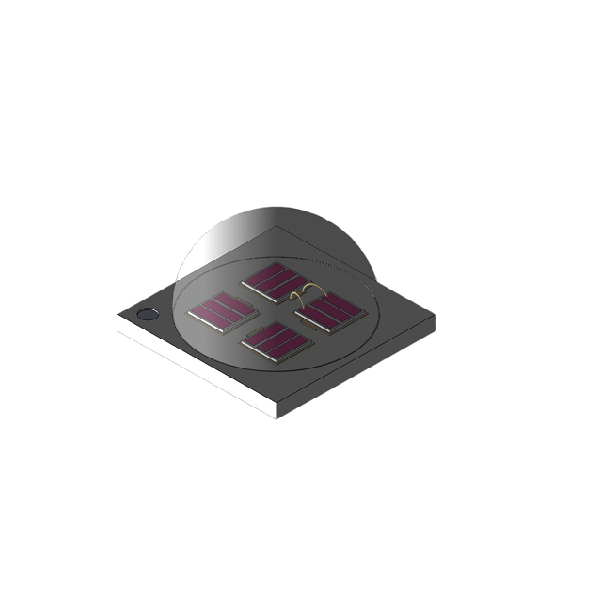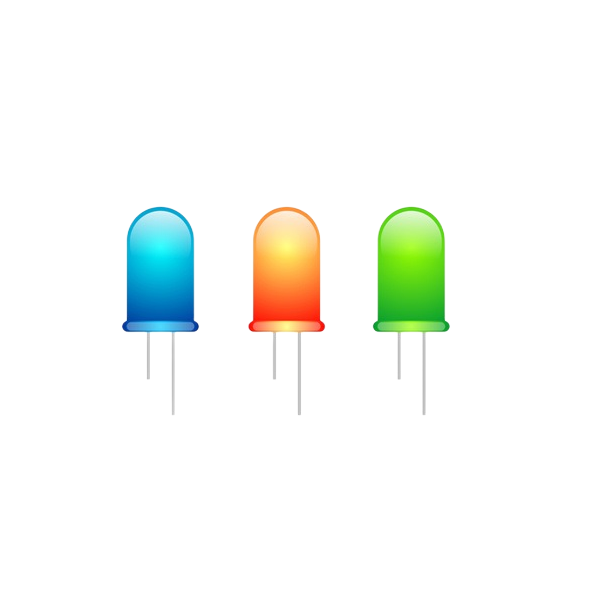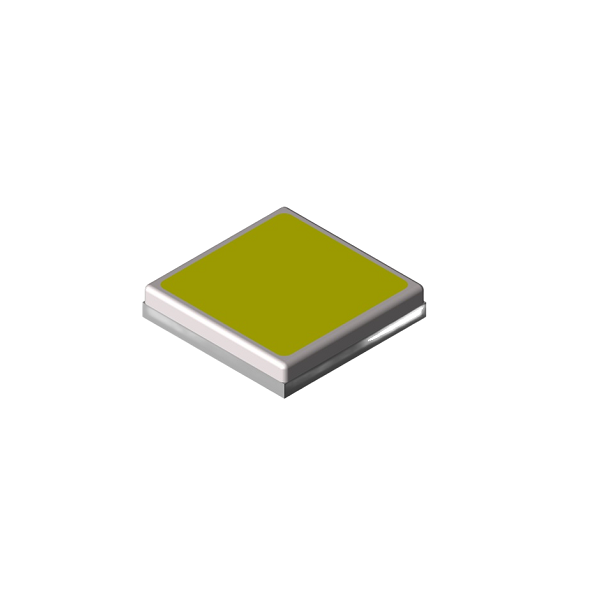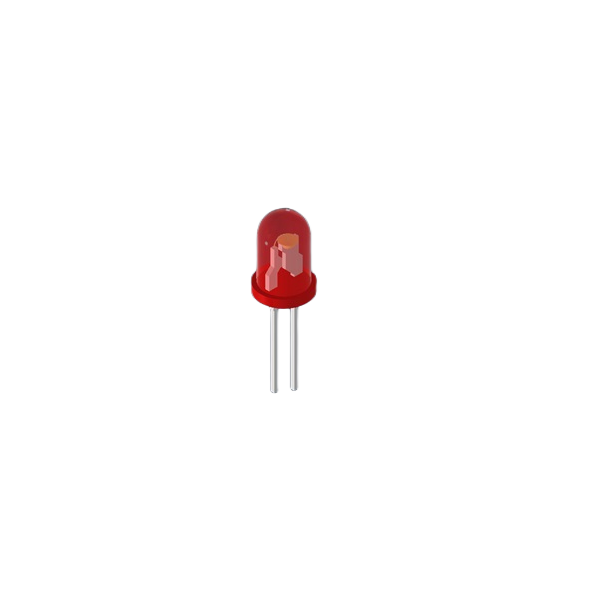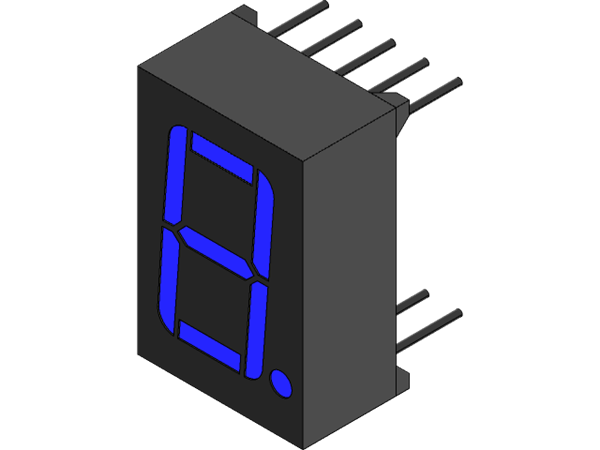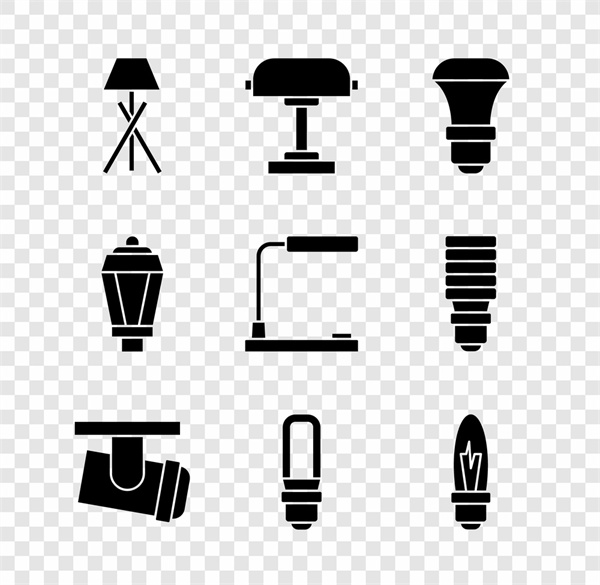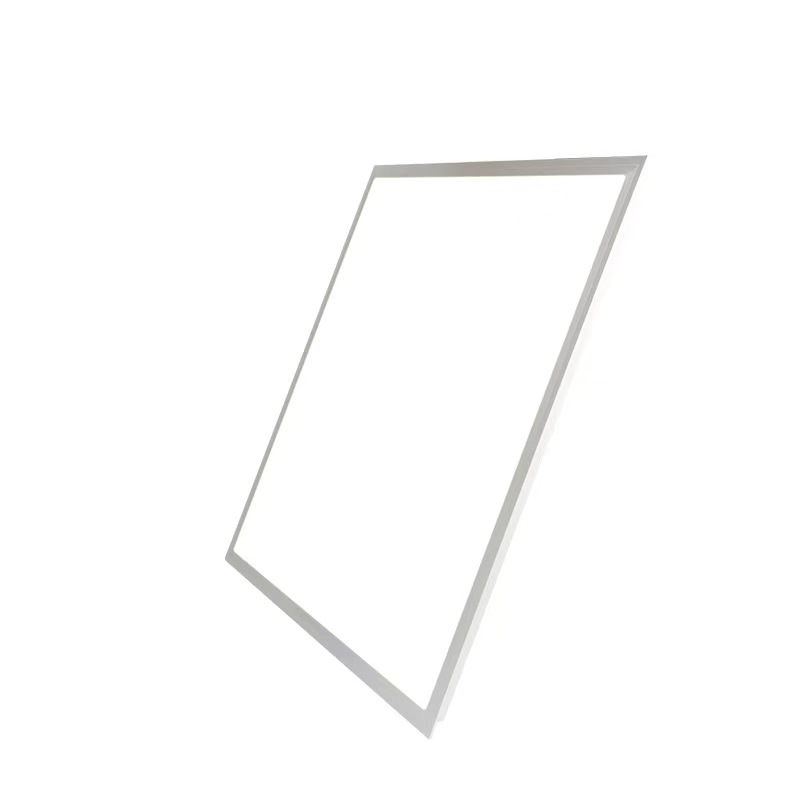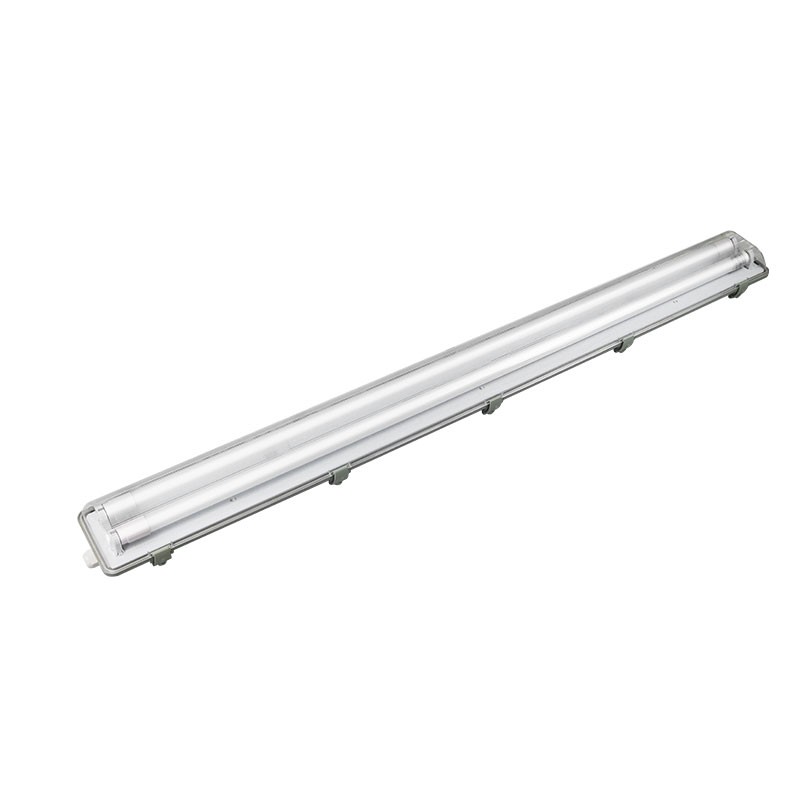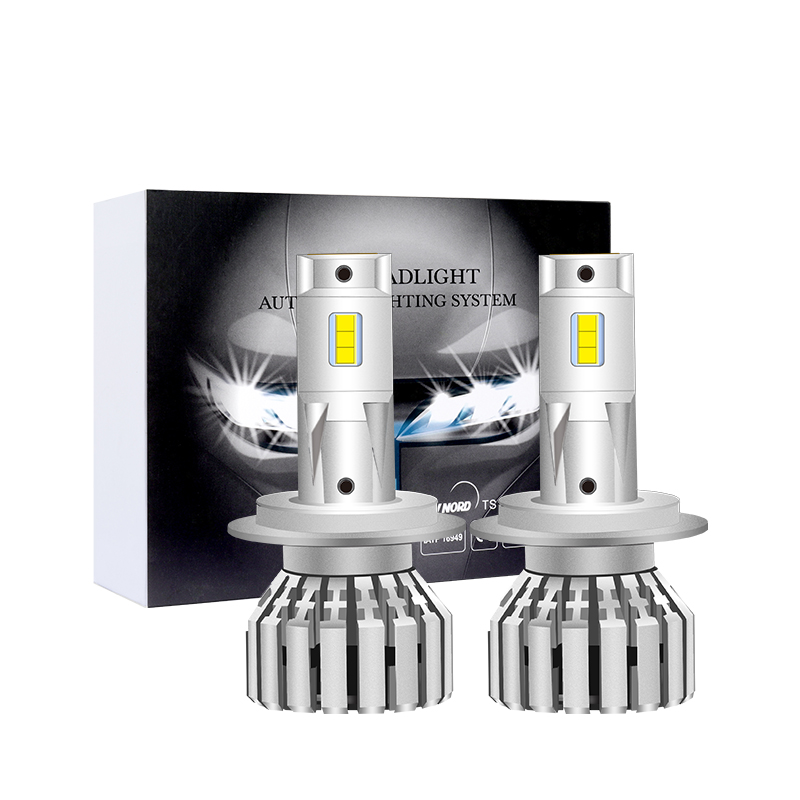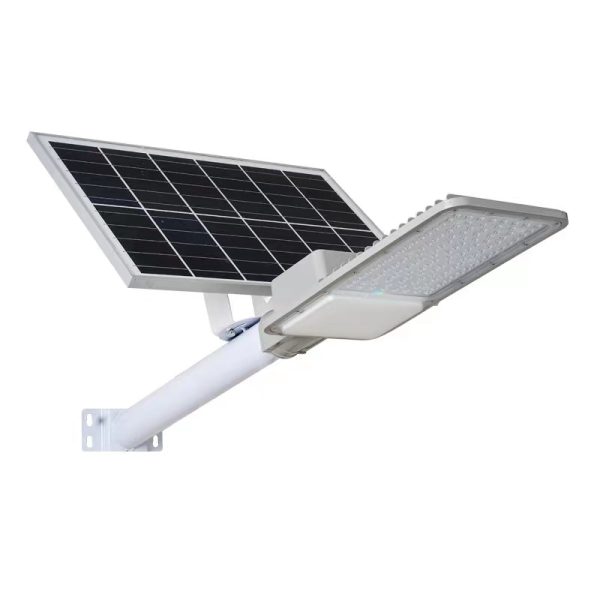Application of Infrared IR LED in Infrared Camera
With the increasing demand for night vision monitoring in security video surveillance system engineering, infrared cameras have entered the mainstream market of cameras, and sales are increasing day by day. Problems in the application of infrared night vision technology are gradually exposed.
In fact, night vision technology is a photoelectric technology that realizes night observation by means of photoelectric imaging devices. It includes two types of low-light night vision and infrared night vision: low-light night vision technology is a night vision technology with an image intensifier tube, which actually enhances the faint target image illuminated by night skylight for observation photoelectric imaging technology. Here we mainly talk about active infrared night vision technology, which is a night vision technology that implements observation by actively illuminating and using the infrared light reflected by the target to reflect the infrared source. The corresponding equipment is an active infrared night vision device, and the actual core is an infrared camera.
The infrared light source, the camera composed of the non-direct-view photoelectric imaging device CCD or CMOS image sensor as the core, and the lens required for the imaging screen are the three major factors that dominate the night surveillance effect of the infrared camera.
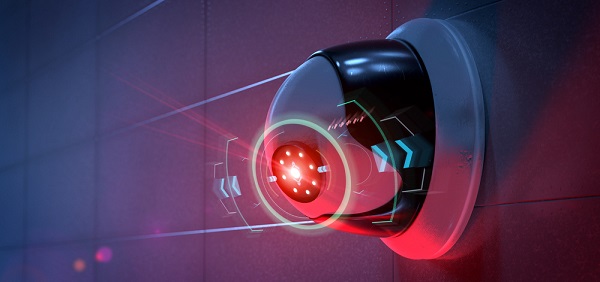
- Selection of infrared light source
Infrared light is an invisible light with a wavelength greater than 780nm. Generally, there are the following three methods for generating such invisible light.
①. Directly use the infrared light emitted by incandescent lamp or xenon lamp. That is, install visible light filters on these two lamps to filter out visible light and only let invisible infrared rays emit;
②. Use infrared light-emitting diodes (LEDs) or LED arrays to generate infrared light. This device generates infrared light through the recombination of electrons and holes in a gallium arsenide (GaAs) semiconductor;
③. Using infrared laser diode LED can also be used as infrared light source. However, it needs to excite or pump electrons in a lower energy state to a higher energy state, and maintain stimulated emission of infrared light through a large number of particle distribution reversals and resonance.
The first type of light source is a thermal infrared light source. Its biggest advantage is that it can be made into a relatively large power and a large irradiation angle, so the irradiation distance is long. Its biggest disadvantage is that it contains visible light components, that is, there is a red burst, and its service life is short. If it works 10 hours a day, it can only be used for 5000 hours for more than a year. If the heat dissipation is not enough, the service life is even shorter. In order to improve the service life of the thermal radiation infrared lamp, it is necessary to use a light control switch circuit to reduce its working time. In addition, a delay switch circuit is added to prevent the interference of ambient light.
The second is an infrared lamp composed of a semiconductor gallium arsenide light-emitting diode array, especially the array-type integrated light-emitting chip LEDArray that is now developed and produced using new technology. The optical output of one LED-Array has reached 800mw-1000mw, and it has become a replacement product of ordinary LEDs. The half-power angle of the LED-Array is 10-120° (variable angle).
Since the LED-Array is a highly integrated LED, and its volume is only the size of a penny, it can evenly illuminate the entire space indoors, and its lifespan is 50,000 hours. It was originally used on aviation aircraft. In recent years, due to the development of the civilian night surveillance market, LED-Array has gradually entered the civilian market and has become an ideal choice for high-quality night surveillance.
Although infrared LED and LED-Array have eliminated thermal infrared light sources, for the monitoring of ultra-long-distance scenes over 1km, infrared LED light sources should still be selected. Because semiconductor lasers have the characteristics of higher brightness and stronger directionality than LEDs.
Generally, the following points should be paid attention to when choosing an infrared light source.
- There should be a margin in the distance selection of infrared lamps
When choosing an infrared lamp, pay special attention to the gap between the nominal distance and the actual irradiation distance. Because the nominal viewing distance of some manufacturers is often too large, it is necessary to conduct actual tests when selecting the irradiation distance of infrared lamps, and to leave sufficient margin to make the illuminance of the observed scene reliable.
- A light source driven by a steady current source should be selected
Because LED is a current-driven device, its luminous brightness and power are proportional to the driving current, not the voltage. Therefore, in order to keep the luminous intensity constant, a light source driven by a steady current source must be selected.
- Choose a light source with good heat dissipation
Because luminous tubes have heat and heat dissipation problems, especially light sources with high power and long distances generate a lot of heat, so it is necessary to choose a light source with good heat dissipation to ensure stable and reliable work.
- It is necessary to choose an infrared light source with a power supply circuit with a light-controlled switch automatic control circuit and separated from the light board
Because the power supply circuit of the infrared lamp is not separated from the lamp board, the heat generated by the light-emitting tube will affect the performance of the components of the power supply circuit, resulting in unstable light emission of the light-emitting tube. With this light-controlled switch circuit, the infrared The lights are off during the day and on at night.
- Infrared lamps should be selected according to the monitoring distance
Because the infrared light-emitting diode LED can be installed on the lens, it can be used with a sensitive infrared camera, or directly installed on the casing around the interface between the camera and the lens. Obviously, these two types of devices have fewer infrared LEDs, and their irradiation distance is definitely not as far as that of a single infrared LED lamp. Generally, if it is more than 50m, it is better to choose a separate infrared lamp. In addition, LED is mostly used for night vision lighting of monitoring scenes with a distance of more than 1km, but the beam of LED is thin and strong. In order to make the infrared beam illuminate a certain range of scenes, use Sometimes it is necessary to expand the beam through a beam expander lens.
Second, the choice of camera
At present, there are two types of photosensitive devices in cameras: CMOS and CCD. Like the CCD, the CMOS image sensor chip also responds to infrared light waves, but its sensitivity in the range of 890-980nm is much higher than that of the CCD image sensor chip, and the attenuation gradient is slower as the wavelength increases. With the rapid development of CMOS image chips, their noise signals have been further reduced, and star-level CMOS cameras have also appeared on the market. Therefore, it is not necessarily limited to the choice of CCD cameras, but can be selected by making full use of their respective advantages. In general, the selection points of infrared cameras are as follows.
- A low-illuminance camera should be selected, and its illumination requirements are generally ≤0.02Lux
Some camera manufacturers or sellers falsely report the minimum illuminance, which greatly reduces the effective distance of night vision, so it is best to test it in detail.
Intensified cameras such as moonlight level and starlight level can work in very dark conditions, but some places with small reflective coefficients still cannot meet the requirements, such as deserts, green lands, forest areas, etc. In this case, it is necessary to use a low-light night vision camera that is directly coupled by a high-performance image intensifier and a CCIR black and white CCD through a fiber panel and a light cone. In short, the lower the illuminance, the better. Since it is not yet standardized, the minimum illuminance claimed by the manufacturer cannot be trusted. It is better to test it under practical conditions. Usually, the illuminance requirement is generally ≤0.02Lux.
- The larger the size of the selected infrared camera image sensor, the better
Because 1/4CCD cannot be used for the effective distance of infrared night vision above 15m, because the luminous flux of 1/4CCD is only 50% of 1/3CCD. The larger the size of the CCD, the larger the received luminous flux; the smaller the size of the CCD, the less the received luminous flux. Therefore, choose 1/2 of the CCD for the night vision camera, and 1/3 of the CCD can be tested if it is feasible, but you must not choose 1/4 of it.
- Infrared cameras must have automatic electronic shutter and automatic gain control (AGC) functions
Because of these functions, the signal can be adjusted to a better state to meet the observation effect.
- Choose a CMOS ultra-miniature camera for concealed occasions
Because low power consumption, high integration, and small size can only be achieved by CMOS image sensors, it can be made into a CMOS camera with the size of a shirt button or a suit button. Coupled with the miniaturization of the corresponding infrared light source and the introduction of high-efficiency batteries, the third eye will be ubiquitous. In this way, with a pair of night vision glasses and a hat equipped with an infrared light source and a CMOS ultra-miniature camera, the night will be like the day. Clearly, this will change the face of our entire social life.
- Choose the supporting small power supply for the camera
The selection of the power supply of the camera should pay attention to the following two points
- Select a regulated power supply. Because the mains AC220V is unstable, if only one AC-to-DC 12V transformer is selected and the voltage is not stabilized, the circuit in the camera will work unstable, so that the camera will not work stably, and the required performance will not meet the requirements;
- It is better to choose a small power supply that is more than twice the current of the camera. If the current of the camera is 200mA or 250mA, generally 500mA is sufficient. If it is too large, such as 1A for 1 camera, the volume will be too large and the price will be too expensive; if it is too small, such as equal to the current of the camera, it may generate heat (due to long continuous working time) and affect reliability and working life.
Third, the choice of lens, etc.
The camera lens is the key equipment of the infrared camera. Its quality (indicator) directly affects the imaging effect of the system. Therefore, the selection of the lens is not only related to the quality of the system, but also related to the project cost. Therefore, pay attention to the following points when choosing a lens:
- It is best to choose an infrared lens
Because of the ordinary optical lens, the infrared light reflected by the object back to the lens cannot be effectively focused on the CCD target surface. At this time, the infrared night vision effect will be greatly reduced, so it is best to use an infrared lens. Especially for color-to-black cameras, if the infrared lens is not used, the focal plane of the day and night monitoring cannot be consistent, so that the day and night images cannot be kept clear.
- The imaging size of the selected lens should preferably be consistent with the size of the image sensor in the camera
The imaging size of the selected lens should be consistent with the size of the image sensor in the camera. If the size of the image sensor is 1/2″, the imaging size of the lens must be 1/2″.
When the imaging size of the lens is larger than the size of the photosensitive surface of the camera, the imaging will not be affected, but the actual imaging field of view is smaller than the nominal field of view of the lens, and when the imaging size of the lens is larger than the photosensitive surface of the camera If the size is small, it will affect the imaging, and it will appear that the imaging picture is blocked by the lens barrel, and black corners will appear on the four corners of the picture.
It can be seen that for 1/3″ cameras, 1/3″, 1/2″ and 2/3″ lenses can be used; for 1/2″ cameras, 1/2″, 2/3″ lenses can be used 1/3 of the lens can not be used. Because the CCD is like the human eye, and the lens is like the glasses that people use. If the glasses are too small, the eyes will not be able to see the surrounding things clearly.
It is best to choose the same installation method as the interface of the lens and the camera
There are two installation methods for the interface between the lens and the camera: C-type installation and CS-type installation, and the two should be the same. If you choose a C-type lens, you need to add a 5mm thick adapter ring. If it is directly connected to the CS interface camera without an adapter ring, the rear mirror of the lens may touch the protective glass of the sensitive surface of the CCD, resulting in damage to the CCD camera, which needs special attention in practice.
It is best to choose an automatic aperture lens to adapt to the large changes in day and night illumination
Due to the day and night monitoring, the illuminance changes in a large range, so it is best to choose an automatic aperture lens that can automatically change according to the illuminance to keep the image clear.
The resolution and light transmittance of the lens must meet the requirements
The resolution of the imaging lens used must be greater than that of the camera, otherwise the required clear effect cannot be achieved. And the light transmittance of the lens in the lens should be good, that is, the attenuation of light should be very small.
The monitoring distance is more than 1 km, and the laser beam expander collimation lens is also required
According to the size and distance of the scene to be observed, choose the appropriate laser beam expander collimation lens, so that the laser beam can illuminate the scene to be monitored, so that the reflected light of the monitored scene can be received by the camera.
Pay attention to choose a protective cover with good performance window glass
In addition to selecting infrared lamps, cameras, and lenses, we must also pay attention to the comprehensive consideration of protective covers, power supplies, etc. Because the protective cover has an impact on the effect of the infrared lamp, if the infrared light passes through different media, the transmittance and reflectance are different. For example, different window glasses, especially self-defrosting coated glass, have different attenuation of infrared light, so pay attention to choose a protective cover with good performance window glass.
Four. Conclusion
It can be seen from the above that the three infrared light sources have their own advantages and disadvantages, but thermal infrared light sources are basically eliminated by infrared LED and LED-Array light sources. Because the LED-Array can also be irradiated to a distance of several hundred meters to monitor the scene. As for the ultra-long-distance monitoring scene of more than 1km, it is better to choose infrared LED light source. Because of its high brightness, one LED is equivalent to many LEDs, so the infrared LED light source is small in size and light in weight, and is the best choice for ultra-long distance.
The most important issue in the selection of infrared cameras is completeness. In addition to selecting a good infrared light source, comprehensive consideration should be given to the matching of cameras, lenses, protective covers, power supplies, etc. Only by comprehensively considering the selection points mentioned in the article can we get twice the result with half the effort.


